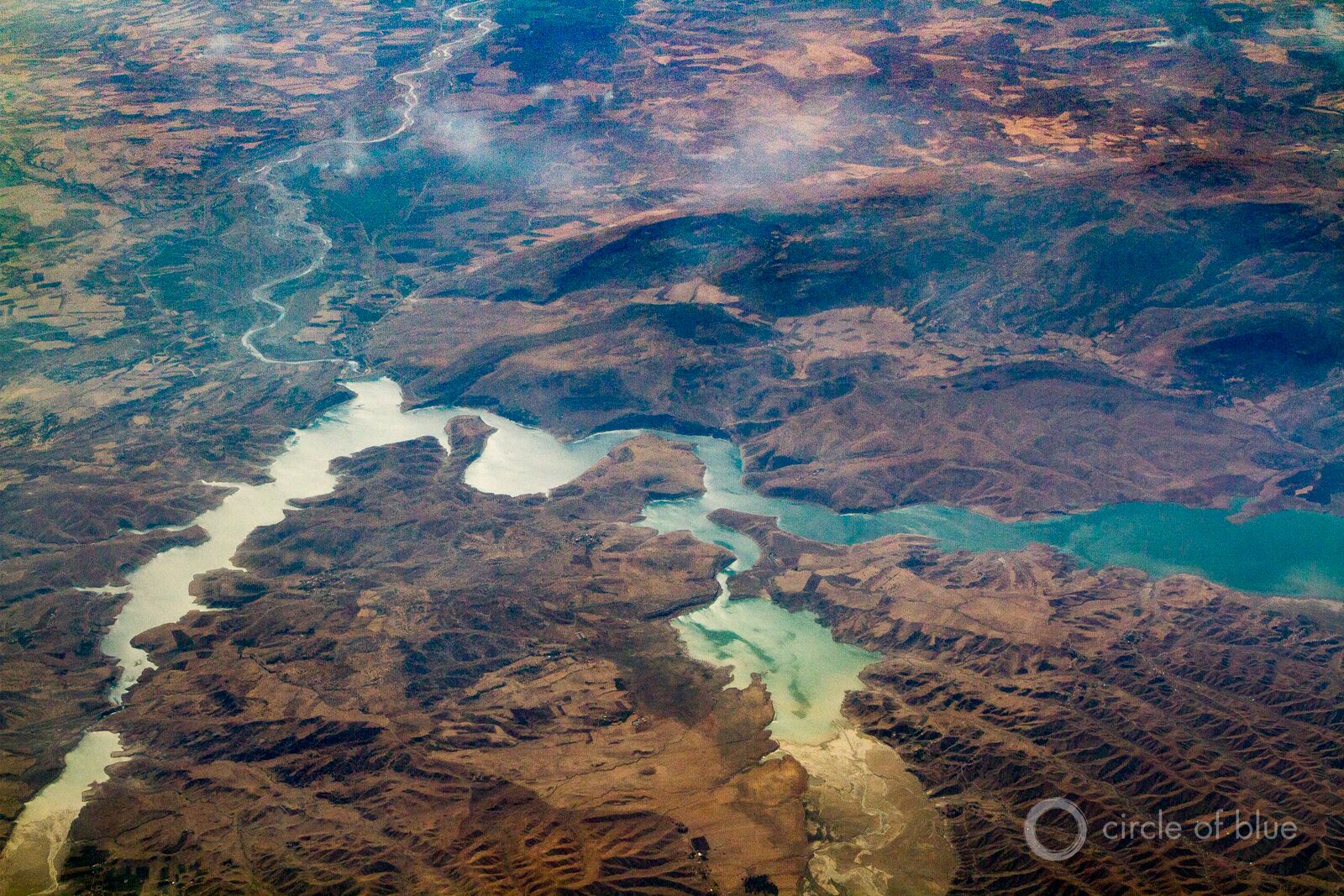But report is less comprehensive than previous assessments and omits key flashpoints for water conflict.

Photo © J. Carl Ganter / Circle of Blue
By Dr. Peter Gleick, President Emeritus of the Pacific Institute
On December 20, 2019, President Trump signed into law the National Defense Authorization Act (Public Law 116-92), including the Intelligence Authorization Act of FY2020. Section 6722 of that law required a report be prepared on the national security effects of “global water insecurity” and be submitted within 180 days (by late June 2020) to “the congressional intelligence committees, the Committee on Foreign Affairs of the House of Representatives, and the Committee on Foreign Relations of the Senate.”
The Trump administration failed to deliver this report on time, finally releasing the unclassified version three days after the November 2020 election. That report, “Water Insecurity Threatening Economic Growth, Political Stability” (National Intelligence Council Memorandum NICM-2020-05949) was sent from the Office of the Director of National Intelligence on November 6th – though it is dated July 10, 2020 – to the congressional committees noted in the Act as well as House and Senate leadership.
The report concludes that “Governments, industry, and civil society are facing an increasing risk of water insecurity as demand grows and supply is increasingly strained.” It attributes these increased risks to “development practices, agriculture, and environmental degradation” and to “poor governance and resource management” that affect both water availability and quality.
It also notes that while most of these risks will be experienced in developing countries, “some developed countries will also experience water strains” and the countries that experience water problems will suffer health and disease problems, growing economic and social inequality, reduced economic growth, and “a greater risk of internal political instability.” For countries that share water resources, water is likely to become a flashpoint for geopolitical competition.
There is nothing new in the report that hasn’t been acknowledged in a long series of previous military and intelligence community reports on water scarcity. To its credit, given the efforts of the Trump administration to eliminate any mention of climate change in government studies, the new report does mention the risks of climate change:
“Anthropogenic degradation of landscapes and waterscapes and climate change are effecting [sic] the quantity, quality, and timing of water supplies… Multiple climate models indicate increasing variability, intensity, and occurrence of droughts and floods.”
But overall, this report is far less comprehensive and detailed on the nature and likelihood of water-related security threats than previous intelligence community assessments, including the 2012 report from the Defense Intelligence Agency “Global Water Security” and the 2014 Quadrennial Defense Review, which stated:
“Competition for resources, including energy and water, will worsen tensions in the coming years and could escalate regional confrontations into broader conflicts – particularly in fragile states.” And “Climate change may exacerbate water scarcity and lead to sharp increases in food costs. The pressures caused by climate change will influence resource competition while placing additional burdens on economies, societies, and governance institutions around the world. These effects are threat multipliers that will aggravate stressors abroad such as poverty, environmental degradation, political instability, and social tensions – conditions that can enable terrorist activity and other forms of violence.”
The new report notes the connections between water problems and threats to human health, including the lack of adequate safe and affordable water and sanitation to billions of people, the link between water and economic development, and the risk to political stability and domestic unrest. It makes the following observation about lessons learned from the COVID-19 pandemic:
“…as the COVID-19 pandemic has demonstrated, some wealthier countries also lack adequate resilience mechanisms to manage multiple or cascading threats simultaneously, and thus remain vulnerable to systemic shocks.”
There are some noticeable gaps and omissions in the new assessment. It paints, in broad brushstrokes, regions of the world where water security problems are likely to be most severe. While there are no surprises – it identifies the arid Middle East, north Africa, and southern/southeastern Asia as high-risk basins – it fails to explicitly address high-risk examples like the ongoing disputes over the Grand Ethiopian Renaissance Dam on the Blue Nile, the worsening farmer-pastoralist violence in Nigeria, Niger, Mali, and surrounding countries, drought-related violence seen in recent years in India, Iran, Iraq, and parts of Latin America, or even the recent violence associated with the dispute between the United States and Mexico over the waters of the Conchos River, a major tributary of the Rio Grande.
Other gaps in the assessment include the weak discussion of climate-related risks mentioned above, no discussion of the challenges these water problems will pose for US military forces and intelligence assets, or any assessment of the issue of water as a casualty or weapon of conflict, as seen in recent years in Iraq and Yemen. US responses or potential solutions are also not discussed, such as the diplomatic role of the State Department in negotiating agreements among disputing parties, the role of the US in providing economic and technological development assistance to countries seeking to address water inequities, shortages, or quality problems, or the value of international law and treaties.
A report on water security that is five months late is better than no report at all, but the growing threat of water-related violence around the world, including risks that directly and indirectly affect US economic and security interests, requires far more attention from the federal government than it has been given in recent years. There is an opportunity now for the next administration to give it the attention it deserves.
This post originally appears on Peter Gleick: Water. Climate. Sustainability. Dr. Peter Gleick is a world-renowned expert, innovator, and communicator on water and climate issues. Dr. Gleick serves on the Circle of Blue Board of Directors. Republished with permission.


